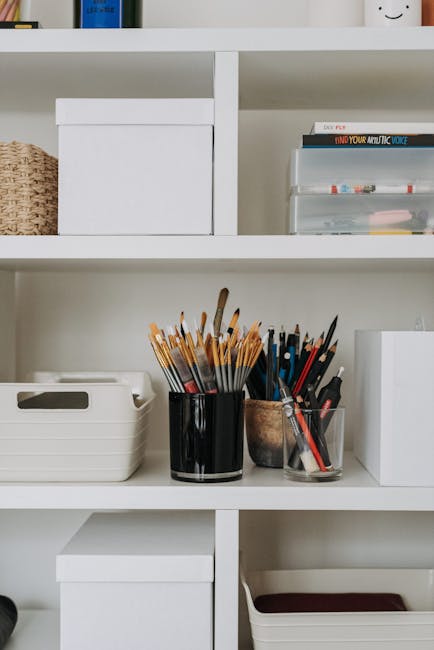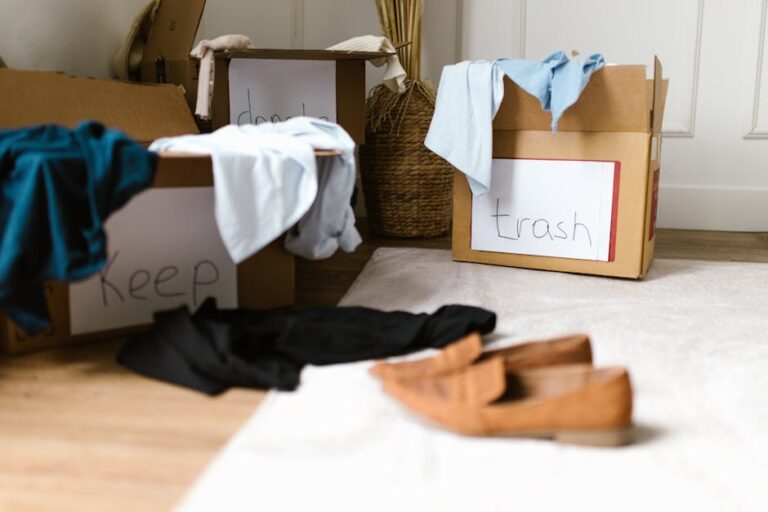
Unlock Productivity: Organizing Your Home Office for Maximum Efficiency
Understanding the Foundation: Ergonomics and Workflow
Before tackling the visible clutter, understanding the underlying principles of a productive workspace is crucial. Ergonomics and workflow are the cornerstones of a functional and efficient home office. Ergonomics focuses on optimizing your physical comfort and reducing the risk of strain and injury. Workflow considers the sequence of tasks you perform daily and arranging your space to support that flow.
-
Ergonomic Assessment: Begin with a self-assessment of your posture while working. Are you slouching? Is your neck strained? Common culprits include monitor height, chair support, and keyboard/mouse positioning.
- Monitor Height: The top of your monitor screen should be at or slightly below eye level. This prevents neck strain from looking up. If using a laptop, consider an external monitor and stand.
- Chair Support: Invest in an adjustable chair with lumbar support, armrests, and adjustable height. Your feet should rest flat on the floor or a footrest, and your knees should be at a 90-degree angle.
- Keyboard and Mouse Placement: Position your keyboard and mouse close to your body to minimize reaching. Your wrists should be straight and supported. Consider using a wrist rest to further reduce strain.
- Lighting: Adequate lighting is critical. Natural light is ideal, but supplement with artificial light as needed. Avoid glare on your screen by positioning your desk perpendicular to windows. Task lighting is essential for focused work.
-
Workflow Mapping: Take a moment to analyze your typical workday. What tasks do you perform most frequently? What resources do you need readily available?
- Prioritize Accessibility: Arrange items based on frequency of use. Frequently used items, such as your phone, notepad, and favorite pens, should be within easy reach.
- Zone Creation: Designate specific zones within your office for different tasks. For example, a “computer zone” for focused work, a “reference zone” for documents and books, and a “communication zone” for phone calls and video conferences.
- Minimize Interruptions: Position your desk away from high-traffic areas or potential distractions like televisions or noisy appliances. Consider noise-canceling headphones if distractions are unavoidable.
De-Cluttering and Purging: The First Step to Organization
Before implementing organizational systems, a thorough de-cluttering is essential. This involves removing anything that doesn’t contribute to your work or well-being in the space.
- The Three-Box Method: Utilize three boxes labeled “Keep,” “Donate/Sell,” and “Trash.” Systematically go through every item in your office, from desk drawers to bookshelves, and assign it to one of these categories.
- Keep: Items essential to your work or that you genuinely enjoy having in your office.
- Donate/Sell: Items in good condition that you no longer need but could be useful to someone else. Consider donating to a local charity or selling online.
- Trash: Items that are broken, unusable, or no longer serve any purpose.
- Digital De-Clutter: Physical clutter often mirrors digital clutter. Take time to organize your computer files, delete unnecessary emails, and unsubscribe from unwanted newsletters.
- File Organization: Create a clear and consistent file structure on your computer. Use descriptive file names and avoid saving files to your desktop.
- Email Management: Set up folders for different projects or clients and regularly archive or delete emails. Utilize filters to automatically sort incoming emails.
- The One-In, One-Out Rule: After de-cluttering, adopt the “one-in, one-out” rule. For every new item you bring into your office, remove one similar item. This helps prevent future clutter build-up.
Implementing Organizational Systems: Tools and Techniques
Once your office is de-cluttered, you can implement organizational systems to maintain order and efficiency.
- Desk Organization: A clear desk promotes a clear mind.
- Desk Organizers: Utilize desk organizers, such as pen holders, file trays, and drawer dividers, to keep frequently used items within reach but out of the way.
- Cable Management: Tame unruly cables with cable ties, clips, and sleeves. This not only improves aesthetics but also prevents tangling and potential hazards.
- Vertical Space: Maximize vertical space with shelves or wall-mounted organizers. This allows you to store items without taking up valuable desk space.
- Filing Systems: Implement a robust filing system for physical documents.
- Hanging Files: Use hanging files to organize documents within file cabinets. Label each file clearly and consistently.
- Color-Coding: Color-code files by category or project to quickly identify specific documents.
- Digital Scanning: Consider scanning important documents and storing them digitally to reduce paper clutter.
- Storage Solutions: Invest in storage solutions that suit your specific needs.
- Shelving Units: Shelving units provide versatile storage for books, binders, and other office supplies. Choose shelves that are adjustable to accommodate items of different sizes.
- Rolling Carts: Rolling carts offer portable storage for items you need to access frequently but don’t want cluttering your desk.
- Storage Bins: Use storage bins to organize smaller items, such as craft supplies, electronic accessories, or personal belongings.
Maintenance and Habits: Sustaining an Organized Space
Maintaining an organized home office requires consistent effort and the development of good habits.
- Daily Tidy-Up: Dedicate a few minutes each day to tidying up your office. Put items back in their designated places and clear your desk of any clutter.
- Weekly Deep Clean: Schedule a weekly “deep clean” to address any lingering clutter or organizational issues. This is also a good time to dust and vacuum your office.
- Regular Purge: Periodically review your office and purge any items you no longer need. The “one-in, one-out” rule helps prevent clutter from accumulating.
- Mindful Consumption: Be mindful of what you bring into your office. Avoid impulse purchases and only acquire items that you truly need.
- Embrace Minimalism: Consider adopting a minimalist approach to your office décor. A clutter-free environment can promote focus and reduce stress.
By focusing on ergonomics, workflow, de-cluttering, and implementing organizational systems, you can transform your home office into a productive and inspiring workspace. Remember that organization is an ongoing process, so be patient with yourself and celebrate your progress along the way. A well-organized home office will not only boost your productivity but also enhance your overall well-being.

